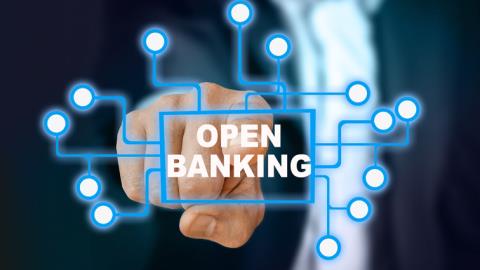As financial institutions shift toward a digital end-to-end lending process, they are setting the groundwork for a new era in banking founded on Fintech partnerships and an open ecosystem.
Rise of open banking
Open Banking—driven by regulatory, technology and competitive dynamics—calls for banks to use APIs to make certain customer data available to non-bank third parties. The innovation is both evolving the industry toward hyper-relevant, platform-based distribution and giving banks a rich opportunity to expand their ecosystems and extend their reach.
Open Banking has become a global movement driven by regulatory, customer and ecosystem forces, each shaping the outcomes of a bank’s Open Banking initiatives. In order to deliver these outcomes, realize the full value from Open Banking, as well as keep improving their offerings, banks need to measure and monitor not only the key performance indicators (KPIs) specific to Open Banking, but also the impact of these KPIs on the performance of the business at a higher level.
The potential benefits of open banking are substantial: improved customer experience, new revenue streams, and a sustainable service model for traditionally underserved markets.
So, Open Banking in simplifying payments-how it helps?
Open Banking in Simplifying Payments
Open Banking grants access to financial data to third-party developers (provided users give their permission). By enabling non-financials to develop APIs around existing banking infrastructure, a host of innovative new services and applications are now improving the customer experience.
Cloud-based APIs are at the heart of fast and efficient digital transformation strategies. Simple plug and play functionality make it possible for financial institutions to adopt an integrated environment of applications, all designed to automate critical workflows to return faster credit decisions. The method of aggregating data across multiple accounts into one, easy-to-use platform, offering customers a 360-degree view of their spending and simplifying the ever-growing number of financial touchpoints customers encounter daily. Open banking will also enhance real-time payments, going head-to-head with the card scheme to enable instant transactions between retailers and consumers.
Sharing of limited data on “thin file” consumers can help to advance financial inclusion goals, pooling limited information to arrive at more precise risk-scoring and credit-underwriting decisions. By introducing more consumers to the formal financial system, open banking increases the market opportunity and the potential to deliver profitable services in the future.
Conclusion
From offering personalized insights to simplifying payment transactions, open banking provides the spark banks need to develop modern financial tools that provide even more value to their customers. As the payments landscape grows increasingly competitive, American banks that embrace APIs will appeal to prospective customers with innovative services while strengthening loyalty among their existing clientele.





